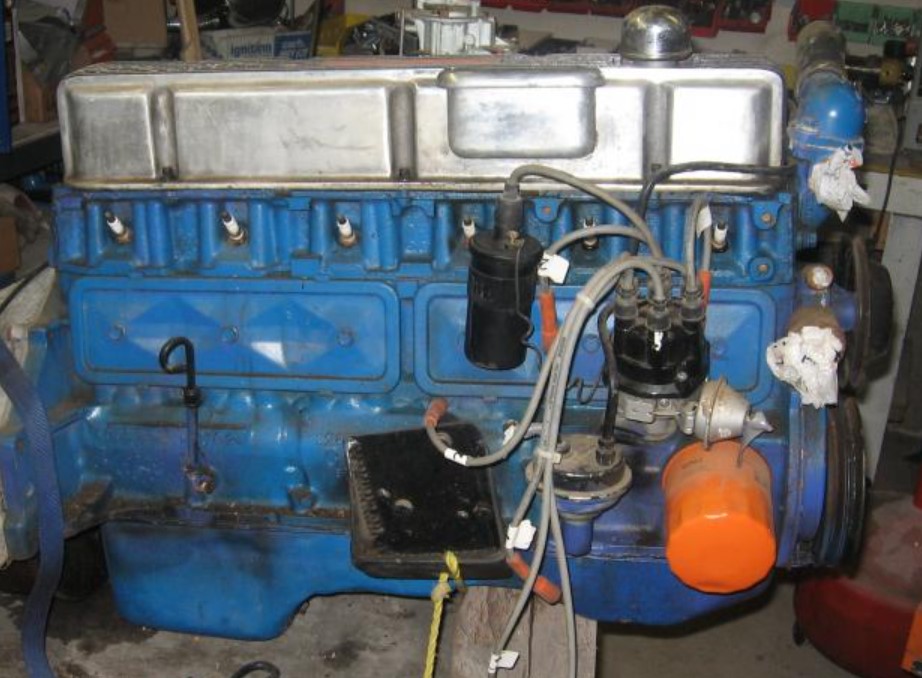How To Identify Chevy 6 Cylinder Engines? Do This In 6 Steps
Are you looking for How To Identify Chevy 6 Cylinder Engines? Identifying Chevrolet’s 6-cylinder engines is a blend of detective work and automotive knowledge. Understanding the nuances of these engines enhances your automotive expertise, making you adept at car maintenance or restoration.
Key Takeaways
- Engine Block Number: The primary method for identification.
- Head Casting Numbers: Provide additional information.
- Visual Inspection: Look for unique engine characteristics.
- Historical Knowledge: Familiarize with common Chevy 6-cylinder engines.
- Consulting Experts: Leverage forums and professional advice.
How To Identify Chevy 6 Cylinder Engines?
To identify Chevy 6-cylinder engines, you should:
- Locate the Engine Block Number: This number is usually stamped on the side or rear of the engine block. It provides information about the engine’s manufacturing date, model, and place of production.
- Decode the Engine Block Number: Use Chevrolet’s engine identification charts or online databases to translate the alphanumeric code into meaningful information about the engine’s model and year of manufacture.
- Check the Head Casting Numbers: Found on the cylinder head, these numbers can offer additional details and help confirm the engine’s model and production period.
- Perform a Visual Inspection: Look for distinctive features like the shape of the intake manifold, the arrangement of the exhaust ports, and the overall engine layout, which can vary between different Chevy 6-cylinder models.
- Refer to Historical Information: Familiarize yourself with common Chevy 6-cylinder engines and their characteristics. Knowing the history and evolution of these engines can be helpful in identification.
- Consult Experts if Needed: For more challenging identifications, especially with modified or rare engines, seeking advice from Chevy enthusiasts, forums, or professional mechanics can be beneficial.

Engine Block Number: The First Step
Locating the Engine Block Number
The engine block number, often found on the engine’s rear or side, is the most reliable identification method. This alphanumeric code reveals the engine’s manufacturing date and model.
Decoding the Engine Block Number
Decoding this number requires reference to Chevy’s engine identification charts. These charts correlate numbers to specific engine models and production years.
Head Casting Numbers: Additional Clues

Understanding Head Casting Numbers
Head casting numbers, located on the cylinder head, provide supplementary information. These numbers can confirm the engine’s identity or indicate modifications.
The Role of Head Casting Numbers in Verification
Cross-referencing these numbers with official Chevy records can validate the engine block number’s findings or reveal discrepancies.
Visual Inspection: Recognizing Unique Features
Identifying Engine Characteristics
Visual inspection involves looking for distinctive features like the shape of the intake manifold or the arrangement of the exhaust ports.
The Importance of Visual Details
These details can distinguish between similar engine models or confirm the engine’s authenticity.
Historical Knowledge: Chevy’s Engine Evolution

The Evolution of Chevy 6-Cylinder Engines
Understanding the historical development of these engines, from the “Blue Flame” inline-six to later models, aids in identification.
Impact of Historical Context
Knowing the production years and common applications of each engine model provides a contextual framework for identification.
Consulting Experts and Forums
Leveraging Online Forums
Online forums and communities can offer insights from experienced enthusiasts and experts in Chevy engines.
The Role of Professional Expertise
In cases of uncertainty, consulting with a professional mechanic or a restoration expert can provide definitive identification.
Advanced Techniques in Engine Identification

Utilizing Modern Technology
Modern technology, like digital calipers and engine scanners, can provide precise measurements and readings, aiding in accurate engine identification. These tools are especially useful for verifying engine dimensions and characteristics that are not immediately visible.
The Role of Historical Documentation
Consulting original factory documentation, service manuals, and old catalogs can offer invaluable information. These resources often contain detailed diagrams, specifications, and other data that can be critical in identifying older or rarer Chevy 6-cylinder engines.
The Significance of Engine Modifications
Identifying Aftermarket Changes
Many Chevy engines have undergone modifications, whether for performance enhancement or due to past repairs. Recognizing these changes is crucial as they can affect the engine’s original identification markers.
How Modifications Impact Identification
Modifications can range from minor alterations to major overhauls. Understanding how these changes can mask or alter original engine characteristics is key to accurate identification.
Cross-Referencing Serial Numbers with Historical Sales Records
Accessing Sales Records
Accessing historical sales records, where available, can provide a direct link between a specific engine and its original vehicle. This can be particularly useful for engines that were used in limited production models or special editions.
The Importance of Sales Records in Provenance Verification
For collectors and restoration experts, verifying the provenance of an engine can add significant value and authenticity to a vehicle. Sales records play an integral role in this verification process.
How Do I Identify A GM V6 Engine?
Identifying a General Motors (GM) V6 engine involves several steps, each providing critical information about the engine’s origin, model, and specifications.

Locating and Decoding the Engine Identification Number
The first step in identifying a GM V6 engine is locating the engine identification number (EIN). This number is typically found on the engine block and consists of alphanumeric characters.
The EIN not only identifies the engine type but also indicates the year of manufacture, the factory where it was made, and other key details. Decoding the EIN can be done using GM’s engine identification guides or online resources specifically dedicated to GM engine codes.
Visual Inspection and Physical Characteristics
Visual inspection is another crucial method. GM V6 engines have distinct physical characteristics depending on their model and production year.
Features like the shape and size of the intake manifold, the pattern of the valve cover, and the arrangement of the exhaust system can give clues about the engine’s identity.
Additionally, the overall size and layout of the engine can help distinguish between different GM V6 models.
How Can I Tell What Chevy Engine I Have?
Identifying a Chevrolet engine involves a combination of methods, primarily focused on understanding and interpreting various identification markers on the engine.
Engine Block Casting Number and Its Location
The engine block casting number is one of the most reliable ways to identify a Chevy engine. This number, usually found on the rear of the engine or near the cylinder head, gives information about when and where the engine was made.
The casting number can be cross-referenced with Chevrolet’s engine identification charts to determine the engine’s specifics, such as model and year.
Additional Identification Markers and Historical Context
Other identification markers include the head casting number and the stamping on the front engine pad. These numbers provide additional layers of information and can be particularly useful for identifying engines that have undergone modifications or are of a rarer model.
Understanding the historical context of Chevrolet engines, including common models and changes over the years, is also crucial in accurate identification.
How Can You Tell The Difference Between A Chevy 230 And 250?
Distinguishing between a Chevy 230 and a 250 engine requires attention to specific details, as these engines share many similarities but also have key differences.

Engine Block Casting Numbers and Dimensions
The most definitive way to tell the difference is by checking the engine block casting numbers. These numbers are found on the engine block and can be cross-referenced with Chevrolet’s engine identification charts. The 230 and 250 engines have distinct casting numbers.
Additionally, the physical dimensions of the engines, such as the bore and stroke, differ slightly. The 230 engine typically has a bore of 3.875 inches and a stroke of 3.25 inches, while the 250 has a bore of 3.875 inches and a stroke of 3.53 inches.
Cylinder Head and Valve Configuration
Another distinguishing feature is the cylinder head and valve configuration. The 230 and 250 engines may have different head casting numbers, indicating variations in the cylinder heads. These differences can sometimes be seen in the arrangement of the valves or the shape of the combustion chamber.
How Can You Tell The Difference Between A 235 And 261?
The Chevy 235 and 261 engines, both part of the famous “Blue Flame” series, have distinct characteristics that set them apart.
Engine Block Visual Identification
One of the first steps in differentiating these engines is a visual inspection of the engine block. The 235 and 261 engines have different block casting numbers, which are usually located on the side of the engine block.
These numbers can be used to definitively identify the engine model. Additionally, the physical size of the 261 engine is slightly larger than the 235, which can be noticeable upon inspection.
Head Casting Numbers and Carburetor Type
The head casting numbers are also different for these engines and can be found on the cylinder head. These numbers are unique to each engine type and can confirm the engine’s identity.
Furthermore, the carburetor types used on these engines were often different, with the 261 typically featuring a larger carburetor to accommodate its larger size and increased power output.
Conclusion
Identifying Chevy 6-cylinder engines is an art, requiring a blend of technical knowledge, historical understanding, and keen observation. Whether for restoration, repair, or sheer curiosity, mastering this skill offers a deep appreciation of Chevrolet’s engineering legacy. The journey of identifying these engines is as rewarding as it is challenging, providing an insightful glimpse into automotive history.
People Also Ask
How can I tell if a Chevy 6-cylinder engine has been rebuilt using non-original parts?
Look for inconsistencies in casting numbers, unusual wear patterns, or parts that do not match the engine’s supposed production era. Non-original parts often have different markings or lack the patina of age that original parts possess.
Can the engine’s color help in identification?
Yes, Chevrolet often used specific engine colors for different models and years. However, be cautious as engines may have been repainted.
Are there any quick tips for identifying common Chevy 6-cylinder engines?
Familiarize yourself with the most common models, such as the 235, 250, or the “Blue Flame” series. Each has distinct characteristics like carburetor type, valve cover shape, and exhaust manifold design.
How do I differentiate between a stock Chevy 6-cylinder engine and a performance-modified one?
Performance modifications often include upgraded carburetors, non-standard exhaust systems, and aftermarket valve covers. These modifications can significantly alter the engine’s appearance and performance characteristics.
What if the engine block number is unreadable or missing?
In this case, rely on head casting numbers, visual features, and any available historical documentation. Consulting with experts or Chevy enthusiast communities can also be helpful.

Welcome to the exhilarating world of Matt Rex, a professional car racer turned renowned vehicle enthusiast. Immerse yourself in his captivating blog as he shares heart-pounding adventures, expert reviews, and valuable insights on cars, trucks, jets, and more. Fuel your passion for speed and discover the beauty of vehicles through Matt’s engaging stories and meticulous expertise. Join the ever-growing community of enthusiasts who find inspiration and expert advice in Matt Rex’s blog—a digital hub where the thrill of speed meets the pursuit of knowledge.



![Do NASCAR Cars Have A Clutch? [Quick Answer]](https://www.turbochaos.com/wp-content/uploads/2023/09/Do-NASCAR-Cars-Have-A-Clutch.jpg)


![14mm Spark Plug Socket [All You Need To Know]](https://www.turbochaos.com/wp-content/uploads/2023/07/14mm-Spark-Plug-Socket-768x512.jpg)
